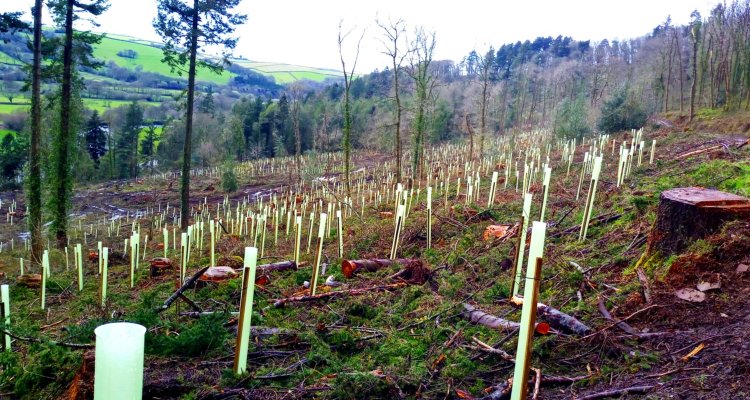
News
How does forest restoration affect water cycles?
Tree restoration is an effective way to store atmospheric carbon and mitigate climate change. Many initiatives exist to increase global tree cover. However, the effects of these initiatives on water resources are still poorly understood. Locally, tree restoration will enhance evaporation. But impacts on precipitation reach far beyond country or even continent level: tree restoration in the Amazon can, for example, affect rainfall in Europe and Eastern Asia. A new study led by Wageningen University & Research has calculated the impact of large-scale tree restoration on water fluxes and water availability globally.
The researchers calculated the hydrological effects of “The global tree restoration potential”: a global map highlighting 900 million hectares where more trees could grow or be planted given local climate conditions, and without encroaching on agricultural and urban land. The increase in evaporation resulting from the increased tree cover was calculated globally at high resolution. The study, recently published in Nature Geoscience, used data-driven models that describe how much rainfall evaporates, and how much goes to streamflow. Anne Hoek van Dijke, PhD candidate Hydrology and Remote Sensing at Wageningen University & Research: “These models include a vegetation parameter for forest and non-forest conditions that was calibrated to a range of different evaporation and streamflow measurements. Afterwards, we calculated where, and to what extent, the increased evaporation would return to the land surface as increased precipitation.”
Local and global shifts in water availability
The results show that large-scale tree restoration can locally increase evaporation annually by nearly 10 litres on average for every square meter of restored forest. Locally, in the tropics particularly, this effect can be much larger, with almost 250 litres for every square meter. Crucially, not all of this water returns to the land surface. Only around 70% of the extra water in the atmosphere returns to the land, while the remaining 30% is shed over the oceans through rain. On a global scale, this means that tree restoration results in a net decrease in water availability.
For individual river basins, the impact of tree restoration is more complex. Following tree restoration, streamflow for most major river basins would decrease (by up to around 10%). But for some other major river basins (e.g. the Yangtze and Amazon river), streamflow reduction will be close to zero because the negative impact of enhanced evaporation is compensated by increased rainfall due to forests in these areas. Interestingly, some of these basins possibly will even gain water.
Future forest restoration
Hoek van Dijke: “In the study, we show that tree restoration will significantly shift water fluxes and water availability. Future tree restoration strategies should consider these hydrological effects. Smart tree restoration strategies are necessary to secure the water supply locally and remotely or enhance the water supply in water-scarce regions.”
The study presents the results under current climate conditions. Under a warmer climate, the tree restoration potential would decrease. Also, future climate change could increase evaporation and annual precipitation, which will affect global atmospheric circulation patterns.